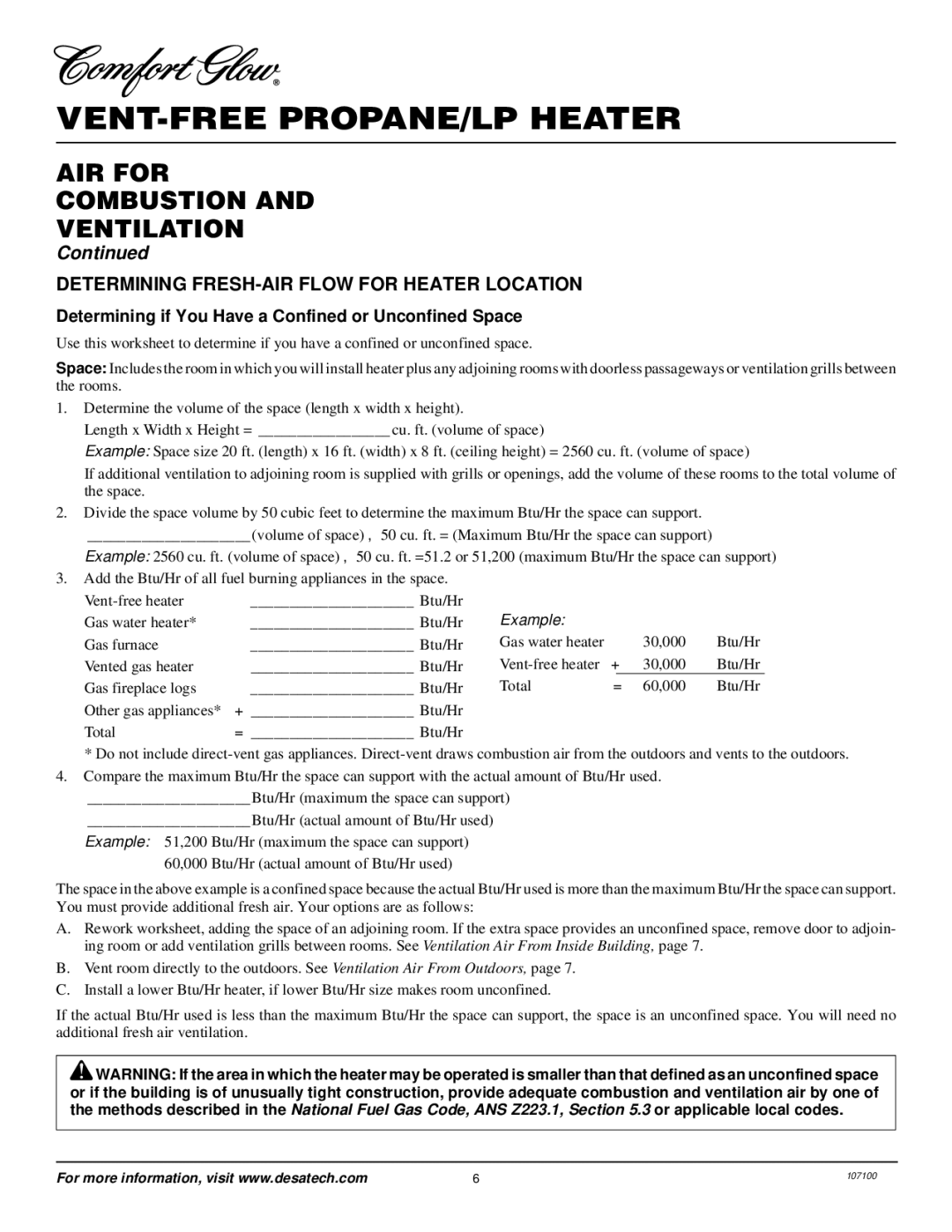RFP30TA specifications
The Desa RFP30TA is a standout heating solution designed for residential and light commercial spaces. With a powerful output and a variety of features, this gas-fired heater is built to provide efficient warmth while ensuring safety and convenience for users.One of the main features of the Desa RFP30TA is its impressive heating capacity. With an output of up to 30,000 BTUs, it is capable of warming spaces of approximately 1,000 square feet, making it suitable for larger rooms or open areas. This makes it an excellent choice for basements, workshops, or other spaces that require effective heating during colder months.
The heater is designed with efficiency in mind. It boasts a high Annual Fuel Utilization Efficiency (AFUE) rating, which translates to lower energy bills and reduced greenhouse gas emissions. Its innovative design ensures that more of the fuel is converted into usable heat, which is not only economical for users but also beneficial for the environment.
As for technology, the Desa RFP30TA incorporates advanced safety features that prioritize user protection. The unit is equipped with a built-in safety shut-off system that automatically turns off the heater if it detects any irregularities in operation. Additionally, it utilizes a reliable thermocouple that monitors flame presence, ensuring that the heater operates safely at all times.
Another characteristic that sets the Desa RFP30TA apart is its versatility in installation. The heater comes with options for both vented and unvented installations, allowing users to choose the best setup for their specific needs. This flexibility means that the unit can be installed in a variety of locations, whether it’s vented to the outdoors or designed for indoor use without the need for a flue.
Furthermore, the Desa RFP30TA is designed with user-friendly controls. The adjustable thermostat allows for precise temperature management, enabling users to maintain their desired comfort level. This feature, combined with the unit's robust build quality, makes it a reliable option for long-term use.
In summary, the Desa RFP30TA is an efficient and powerful heating solution that combines modern technology with user-centric design. With its impressive output, safety features, installation flexibility, and user-friendly controls, it stands as a top choice for those looking for an effective heating solution for their spaces.

